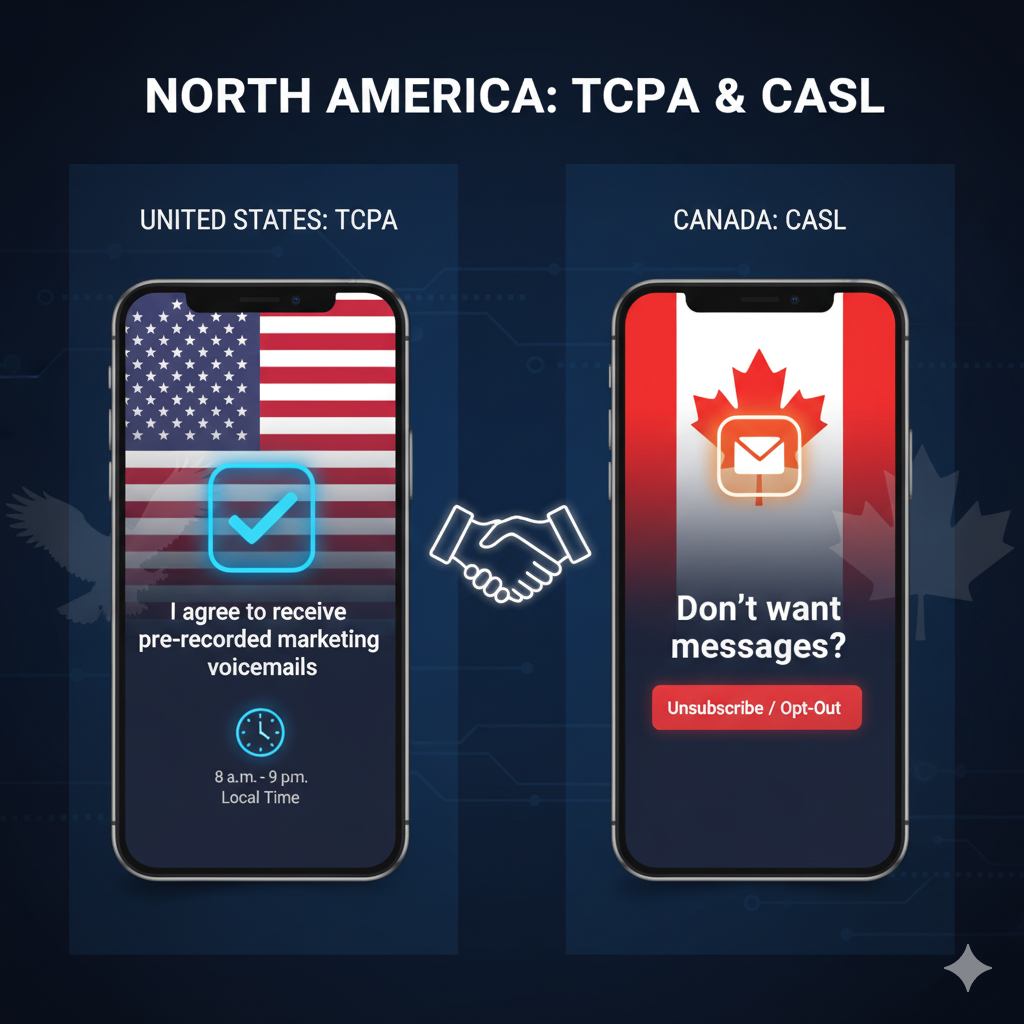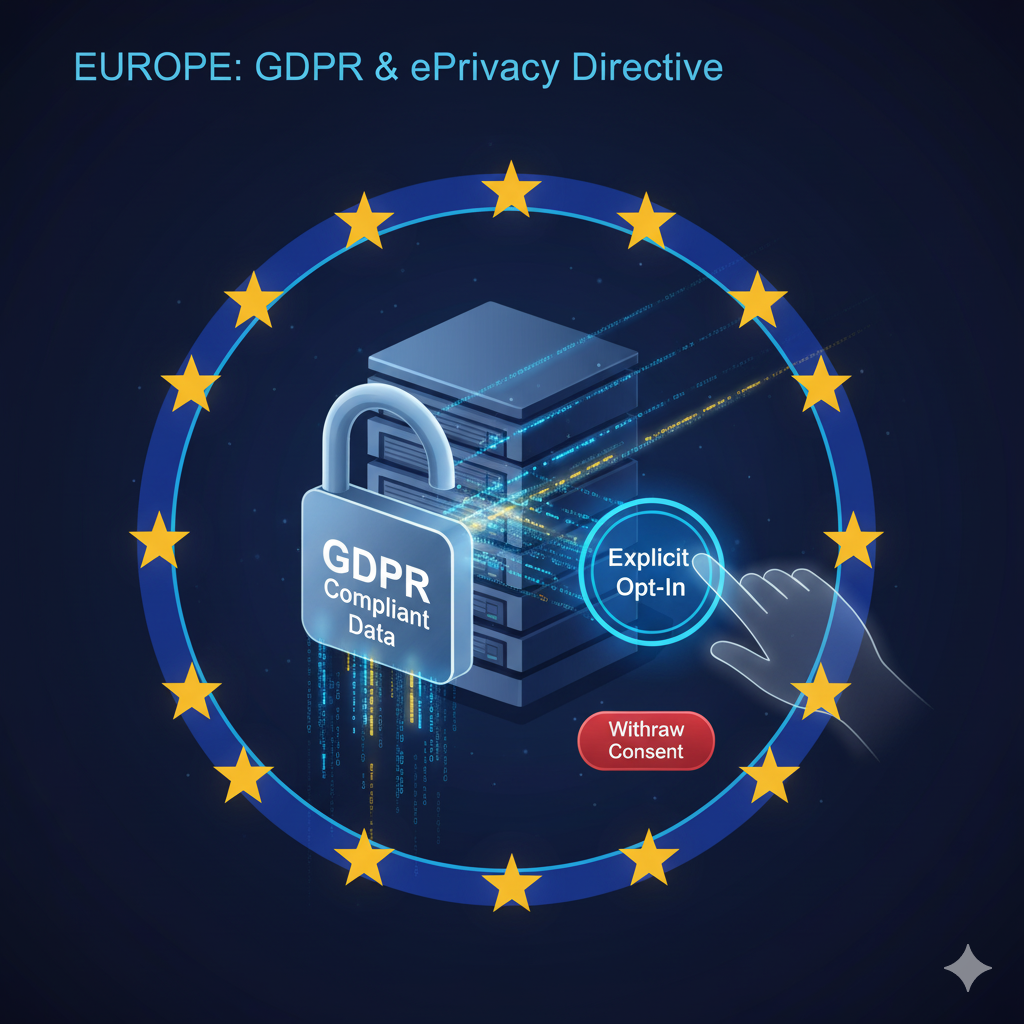As businesses increasingly adopt ringless voicemail (RVM) in their marketing strategies, understanding Ringless Voicemail Compliance and privacy regulations is critical. While RVM provides a non-intrusive way to reach customers directly, legal frameworks governing its use vary widely across countries. Ignoring these laws can lead to hefty fines, legal action, and damage to your brand reputation.
This article explores the key compliance and privacy considerations for ringless voicemail across different regions, and provides actionable strategies to ensure your campaigns are both effective and lawful. It also explains how to integrate RVM safely into an omnichannel marketing strategy.
Understanding Ringless Voicemail and Its Legal Context
Ringless voicemail delivers pre-recorded messages directly to a recipient’s voicemail inbox without ringing their phone. This non-intrusive approach makes it ideal for marketing, customer service follow-ups, and retention campaigns.
However, because it still involves direct communication, RVM falls under regulations that govern unsolicited messages. These laws typically focus on:
- Consent: Whether recipients must opt-in to receive messages.
- Time restrictions: Limits on when messages can be sent.
- Disclosure: Requirements to identify the sender and purpose of the message.
Adhering to these rules not only avoids legal trouble but also builds trust and strengthens your brand image.
United States: TCPA Regulations
In the U.S., the Telephone Consumer Protection Act (TCPA) regulates RVM marketing. Non-compliance can result in penalties ranging from $500 to $1,500 per unsolicited message, making adherence essential.
Key points include:
- Consent Requirements: Businesses must obtain prior express written consent from mobile phone recipients before sending marketing voicemails.
- Identification: Messages must clearly identify the sender and the purpose of the communication.
- Time Restrictions: Messages should only be delivered between 8 a.m. and 9 p.m. local time.
Companies using RVM for lead nurturing or follow-ups can also benefit from combining it with personalised voicemail messages to enhance engagement while staying compliant.

Canada: CASL Guidelines
Canada’s Canada Anti-Spam Legislation (CASL) applies to all commercial electronic messages, including RVM. Penalties can reach up to $10 million CAD per violation, so compliance is vital.
CASL compliance requires:
- Consent: Express or implied consent must be obtained before sending messages.
- Sender Information: Each voicemail must include accurate identification and a clear method to unsubscribe.
- Record Keeping: Businesses must maintain records of consent and message delivery for verification.
For companies running cross-border campaigns, understanding both CASL and TCPA is essential to avoid fines and protect customer relationships.
Europe: GDPR and ePrivacy Directive
In the European Union, RVM campaigns are governed by two main regulations:
- General Data Protection Regulation (GDPR)
- Personal data, such as phone numbers, can only be used with explicit consent.
- Businesses must provide clear information on how data is collected, stored, and used.
- Individuals have the right to withdraw consent at any time.
- Personal data, such as phone numbers, can only be used with explicit consent.
- ePrivacy Directive
- Specifically targets direct marketing communications, including automated messages.
- Consent must be obtained before sending marketing voicemails.
- Specifically targets direct marketing communications, including automated messages.
Countries like Germany, France, and Italy enforce strict penalties for violations, so European campaigns require meticulous attention to consent and messaging. Integrating RVM with other marketing channels, such as email or SMS campaigns, must also respect GDPR rules to remain compliant.

Australia: Spam Act 2003
In Australia, the Spam Act 2003 regulates unsolicited commercial messages, including ringless voicemail. Non-compliance can result in fines up to $2.1 million AUD per day for corporations.
Key compliance requirements include:
- Consent: Recipients must opt-in before receiving marketing messages.
- Identification: Include the sender’s details and contact information.
- Opt-Out Mechanism: Provide a clear, functional way to unsubscribe.
For businesses operating in multiple regions, Australia’s rules are among the strictest, requiring careful attention when integrating global RVM campaigns.
Best Practices for International Ringless Voicemail Campaigns
When running campaigns across multiple countries, adopting global best practices ensures compliance and campaign effectiveness.
1. Obtain Explicit Consent
Always secure prior consent from recipients. Use subscription confirmations, sign-up forms, or CRM records to document approvals. Consent is not just a legal requirement it’s also a marketing advantage, improving engagement rates.
2. Include Clear Identification
Start every voicemail by clearly stating your company name, the purpose of the call, and contact information for queries or opt-out requests. Combining this with scripted voicemail tips can enhance clarity and effectiveness.
3. Respect Time Zones
Send messages during local business hours to avoid complaints and regulatory issues. Scheduling tools can automate delivery for international audiences.
4. Maintain Audit Trails
Keep detailed records of consent, message content, delivery times, and recipient interactions. These records are essential in case of audits or disputes and demonstrate a commitment to responsible marketing.
5. Monitor Local Regulations
Rules change frequently. Assign a compliance officer or consult local legal experts in each target country to stay updated.
6. Provide Opt-Out Options
Always give recipients a simple way to unsubscribe or opt-out. Ignoring this requirement is one of the fastest ways to attract penalties and damage your brand reputation.

Leveraging Technology for Compliance
Modern RVM platforms, including Drop.co, provide built-in compliance features such as:
- Consent tracking and management
- Automated opt-out handling
- Delivery reports and time-zone scheduling
These tools simplify compliance across multiple regions, allowing businesses to focus on maximising engagement without risking legal violations. Integrating RVM with other channels like email and SMS as part of an omnichannel marketing strategy further enhances campaign effectiveness while staying compliant.
The Importance of Training and Education
Even with technology in place, human oversight remains critical. Employees and marketers should receive regular training on:
- Regional compliance laws (TCPA, CASL, GDPR, ePrivacy, Spam Act 2003)
- Ethical messaging practices
- Consent management and record keeping
- Best practices for voicemail scripting
A well-trained team reduces risk, ensures consistency across campaigns, and strengthens your brand reputation globally.
FAQs About Ringless Voicemail Compliance and Privacy
1. What is ringless voicemail and is it legal?
Ringless voicemail (RVM) allows businesses to leave a pre-recorded message directly in a recipient’s voicemail inbox without ringing their phone. Its legality depends on the country and compliance with consent, disclosure, and timing regulations.
2. Do I need consent to send ringless voicemails?
Yes. Most countries, including the U.S., Canada, Europe, and Australia, require prior consent before sending marketing voicemails. Always obtain explicit opt-in from recipients to remain compliant.
3. Can I send RVM messages to mobile and landline numbers?
Regulations often differ for mobile and landline numbers. For example, the TCPA in the U.S. is stricter for mobile numbers. Check local laws before sending messages to any number.
4. Are there restrictions on the time I can send voicemails?
Yes. Many countries enforce time-of-day restrictions to avoid disturbing recipients. For instance, the U.S. limits marketing messages to 8 a.m.–9 p.m. local time. Australia and Canada have similar guidelines.
5. What penalties exist for non-compliance?
Penalties vary by country:
- U.S.: $500–$1,500 per unsolicited message (TCPA)
- Canada: Up to $10 million CAD per violation (CASL)
- Australia: Up to $2.1 million AUD per day (Spam Act 2003)
- Europe: Substantial GDPR and ePrivacy fines
6. How can I stay compliant when running international campaigns?
- Obtain explicit consent in each region
- Include clear sender identification and opt-out options
- Track delivery and maintain audit trails
- Respect local time restrictions
- Stay updated on regional laws
7. Can technology help with compliance?
Yes. Platforms like Drop.co provide tools for consent tracking, automated opt-outs, and time-zone scheduling, making it easier to run compliant RVM campaigns globally.
8. How does RVM integrate with other marketing channels safely?
When integrated into an omnichannel marketing strategy, ringless voicemail can complement email, SMS, and social media campaigns. Ensure that all channels respect consent and privacy regulations to maintain compliance.
Ensuring Compliance While Maximising RVM Impact
Ringless voicemail is an increasingly popular marketing tool, offering a non-intrusive, personal way to connect with audiences. However, navigating the complex landscape of international compliance and privacy regulations is essential.
By understanding the rules in each region, obtaining explicit consent, maintaining records, and leveraging compliant RVM platforms like Drop.co, businesses can deliver highly effective campaigns while protecting their brand reputation. Compliance isn’t just a legal requirement, it’s a strategic advantage that builds trust, strengthens customer relationships, and ensures your marketing campaigns perform optimally across borders.
With the right approach, ringless voicemail can be a powerful addition to any omnichannel marketing strategy, allowing companies to engage customers legally, ethically, and effectively.
